Le divisioni nel centro-destra vengono da lontano e sono nascoste sotto il tappeto come la polvere
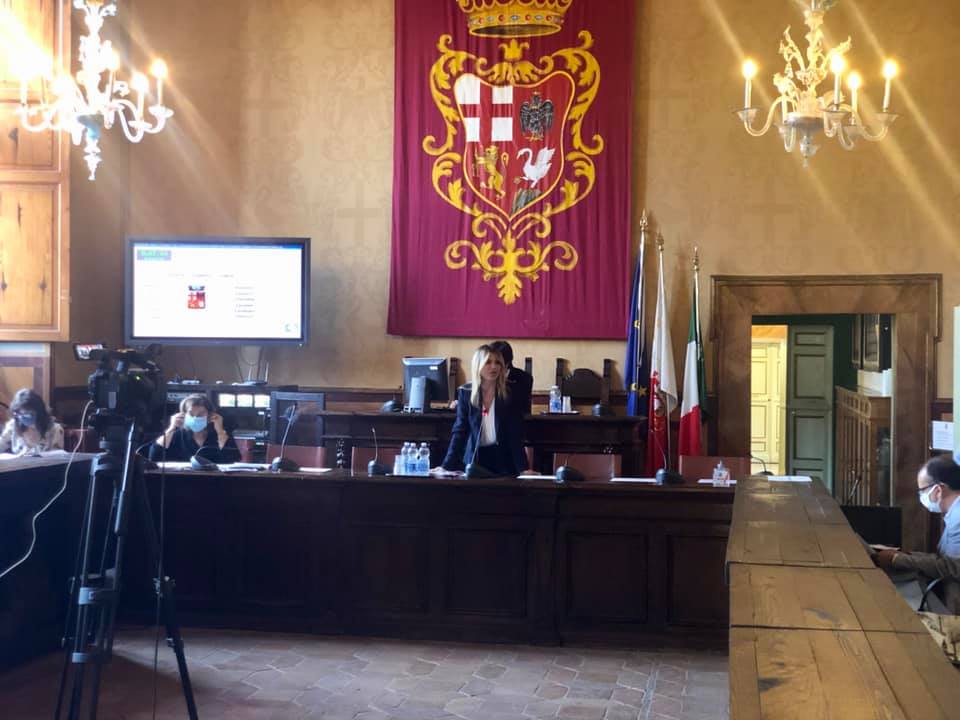
La domanda che si stanno ponendo in molti è, ma il centro-destra è veramente unito e compatto?
E’ complicata la situazione che si è venuta a creare all’interno del partito di Giorgia Meloni a Orvieto. Da una parte abbiamo i vertici provinciali e regionali che hanno fatto fuori quelli locali scegliendo la candidata Tardani, sindaca uscente. Dall’altra abbiamo Carlo Ceci, coordinatore locale e Umberto Garbini, capogruppo in consiglio comunale, oltre che presidente dell’assise cittadina, che hanno immediatamente comunicato l’appoggio alla candidata Palazzetti. Nel mezzo c’è un partito in preda a fibrillazioni da tempo e che ora sono esplose in tutta la loro virulenza.
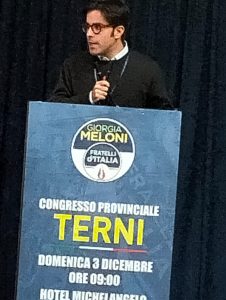 Di certo c’è che abbiamo una lite tra il territorio e i tesserati, perché loro contano in qualsiasi movimento politico, che hanno chiesto di seguire le richieste locali e dall’altra, Terni e Perugia che hanno scavalcato tutto e tutti in nome di equilibri regionali o, come ha sottolineato Garbini in conferenza stampa, “hanno preferito logiche spartitorie perugine ignorando le esigenze del territorio”. A questo punto che succederà a FDI di Orvieto? Ci sarà il commissariamento oppure si andrà avanti così?
Di certo c’è che abbiamo una lite tra il territorio e i tesserati, perché loro contano in qualsiasi movimento politico, che hanno chiesto di seguire le richieste locali e dall’altra, Terni e Perugia che hanno scavalcato tutto e tutti in nome di equilibri regionali o, come ha sottolineato Garbini in conferenza stampa, “hanno preferito logiche spartitorie perugine ignorando le esigenze del territorio”. A questo punto che succederà a FDI di Orvieto? Ci sarà il commissariamento oppure si andrà avanti così?
Questo è l’ultimo capitolo di una lunga serie di divisioni nel centro-destra. La prima crepa risale proprio alla scelta di Roberta Tardani cinque anni fa. All’interno di Forza Italia c’erano due correnti, una che faceva riferimento a Meffi e Fella e un’altra a Pizzo. Vinse quest’ultimo decretando la spaccatura nel partito. Poi è stato il turno di Fratelli d’Italia. Mentre ancora si brindava per la vittoria, all’ombra del Palazzo comunale si consumava lo strappo tra Tardani da una parte e Pace, De Sio, Garbini dall’altra. Il partito rimase fuori dalla giunta con il premio di consolazione della presidenza del consiglio comunale per il giovanissimo, 23 anni allora, Umberto Garbini.
E la Lega? Niente paura, anche per il partito di Salvini non sono mancate le tensioni. Il primo piccolo strappo ci fu con la scelta di non far entrare in giunta Andrea Sacripanti, il più votato in assoluto a Orvieto. Fu scelto Angelo Ranchino che però si ritrovò fuori dalla giunta in maniera piuttosto turbolenta. In molti pensarono, è arrivato il turno di Sacripanti. Nulla da fare. Ci fu un lungo stallo con tanto di interlocuzioni con i vertici nazionali della Lega. Nonostante le rassicurazioni della stessa sindaca all’epoca, “non ci saranno stravolgimenti negli equilibri”; dal cilindro uscì Mario Angelo Mazzi, un tecnico non d’area. Passa poco meno di un anno e dopo ripetuti tentativi di harahiri, l’assessora Sartini, è riuscita nel suo intento. Ci siamo, stavolta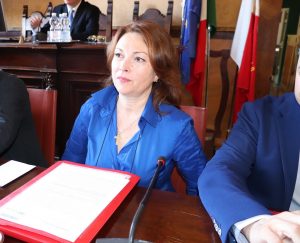 entra Sacripanti ma in “soccorso” di Tardani arrivano le quote rosa. Viene scelta Alda Coppola fresca di ingresso nella Lega, almeno così si è detto.
entra Sacripanti ma in “soccorso” di Tardani arrivano le quote rosa. Viene scelta Alda Coppola fresca di ingresso nella Lega, almeno così si è detto.
Finiti i partiti ecco la lista civica della sindaca. La consigliera Casasole ha fatto la “navetta veloce” tra la stessa lista, Fratelli d’Italia e viceversa. Poi è stata la volta del capogruppo Tempesta che esce sbattendo fragorosamente la porta non condividendo più modi e metodi. Un vero e proprio filotto di divisioni che si trascinano da tempo e che non sono risolte, anzi.
Ma ora c’è la scadenza elettorale e tutti sono stati richiamati all’obbedienza assoluta con alcuni paletti che probabilmente peseranno come “squadra che vince non si cambia” dichiarato dalla sindaca riferendosi alla giunta. Ma i risultati quali saranno? Gli equilibri saranno gli stessi della scorsa tornata elettorale?
Per rispondere servirebbero poteri divinatori; permangono le divisioni che sono state nascoste come la polvere sotto il tappeto che però rimane pronta a riuscire fuori quando meno te lo aspetti.
ENGLISH VERSION
THE DIVISION IN THE CENTER-RIGHT HAVE DEEP ROOTS AND ARE HIDDEN UNDER THE RUG LIKE DUST
The question many are asking is, is the center-right truly united and cohesive? The situation in the party of Giorgia Meloni in Orvieto has become complicated. On one side, we have the provincial and regional leaders 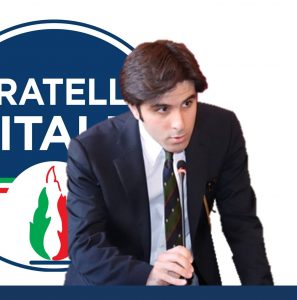 who ousted the local ones by choosing incumbent mayor Tardani as the candidate. On the other side, we have Carlo Ceci, local coordinator, and Umberto Garbini, council group leader and president of the city council, who immediately expressed support for candidate Palazzetti. In the middle, there’s a party caught in long-standing tensions, which have now erupted in full force.
who ousted the local ones by choosing incumbent mayor Tardani as the candidate. On the other side, we have Carlo Ceci, local coordinator, and Umberto Garbini, council group leader and president of the city council, who immediately expressed support for candidate Palazzetti. In the middle, there’s a party caught in long-standing tensions, which have now erupted in full force.
Certainly, there is a conflict between the local area and the party members, who, in any political movement, have asked to follow local requests. On the other hand, Terni and Perugia have bypassed everything and everyone in the name of regional balances or, as Garbini emphasized in a press conference, “they preferred Perugian sharing logics, ignoring the needs of the territory.”. What will happen to Fratelli d’Italia in Orvieto now? Will there be a commissioner or will things continue this way?
This is the latest chapter in a long series of divisions within the center-right. The first crack dates back to the choice of Roberta Tardani five years ago. Within Forza Italia, there were two factions, one aligned with Meffi and Fella and another with Pizzo. The latter won, causing a split in the party. Then came the turn of Fratella d’Italia. While they were still celebrating the victory, a split occurred between Tardani on one side and Pace, De Sio, Garbini on the other, under the shadow of the town hall. The party remained out of the administration, with the consolation prize of the presidency of the city council for the very young, 23 years old at the time, Umberto Garbini.
And what about the League? Have no fear, tensions haven’t been lacking for Salvini’s party either. The first small rift occurred with the choice not to include Andrea Sacripanti, the most voted candidate in Orvieto, in
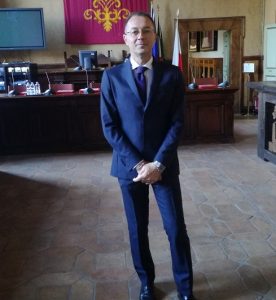
the administration. Angelo Ranchino was chosen instead, but he found himself outside the administration in a rather tumultuous manner. Many thought, now it’s Sacripanti’s turn. Nothing doing. There was a long standoff, including discussions with the national leadership of the League. Despite the reassurances of the mayor at the time, “there will be no upheavals in the balance,” Mario Angelo Mazzi, a non-party technician, emerged as the choice. Less than a year later, after repeated hara-kiri attempts, councillor Sartini succeeded in her intent. We made it, this time Sacripanti enters, but to “aid” Tardani, gender quotas from the League arrive. Alda Coppola, freshly entered into the League, is chosen, or so it was said.
After the parties, here comes the mayor’s civic list. Councillor Casasole has done the “fast shuttle” between the same list, Fratelli d’Italia, and vice versa. Then it was the turn of group leader Tempesta, who exited slamming the door, no longer sharing the ways and methods. A real series of divisions that have been going on for a long time and are not resolved, quite the opposite.
But now there’s the electoral deadline, and everyone has been called to absolute obedience with some guidelines that will probably weigh like “a winning team doesn’t change,” as declared by the mayor referring to the administration. But what will the results be? Will the balances be the same as the last election? To answer that, divinatory powers would be needed; the divisions remain, hidden like dust under the carpet, ready to come out when you least expect it.